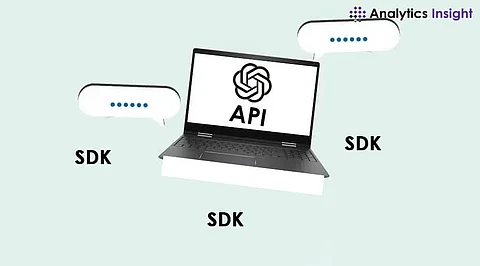
- Insights
- Cryptocurrencies
- Stocks
- White Papers
- Industry
- Geography
- Insights
- Cryptocurrencies
- Stocks
- White Papers
- Industry
- Geography


Modeling human language at scale is a profoundly complex and resource-intensive endeavor. It has taken several decades to reach the current capabilities of language models and large language models. As models are built greater and greater, their complexity and viability increments. Early language models seem to anticipate the likelihood of a single word; present-day expansive language models can predict the possibility of sentences, sections, paragraphs, or whole documents. The estimate and capability of language models have detonated over the final few decades as computer memory, dataset estimate, and handling control increments have increased, and more successful strategies for modeling more extended content arrangements have been created.
A large language model is a sort of artificial intelligence calculation that applies neural network methods with a huge number of parameters to process and get human languages or content utilizing self-supervised learning methods. Tasks like text generation, machine coding, chatbots, content writing, and conversational AI are applications of large languages. Particular examples of LLM models include Chat GPT by open AI, BERT (Bidirectional Encoder Representations from Transformers) by Google, etc.
Numerous procedures were attempted to perform typical language-related tasks, but the LLM is absolutely based on profound learning strategies. LLM (Large Language Model) models are exceedingly proficient in capturing the complex substance connections in the content at hand. They can create content utilizing the semantics and syntactic of the specific language in which we wish to do so. Let's discuss about one technique that lets you give infinite inputs to LLMs.
Organizations are customizing LLMs for their applications by embedding bespoke reports and data into their prompts. Subsequently, expanding setting length has become one of the significant endeavors in moving forward with models and gaining an advantage over competitors. Experiments reported one technique that lets you give infinite inputs to LLMs is Google's Infini attention, which also helps to maintain quality. The Transformer, the deep learning design utilized in LLMs, has a "quadratic complexity. This implies that, for illustration, if you expand the input size from 1,000 to 2,000 tokens, the memory and computation time required to prepare the input would not fair double—it would quadruple.
This quadratic relationship is due to the self-attention component in transformers, which compares each element in the input grouping with each other component. Many organizations or companies utilize this technique to give infinite inputs to LLMs. A few years ago, analysts created diverse techniques to decrease the costs of amplifying the setting length of LLMs. The paper portrays Google's Infini-attention as a long-term compressive memory and nearby causal consideration for proficiently modeling both long and short-range relevant conditions.
Infini-attention keeps the classic consideration tool in the transformer sector and includes a "compressive memory" module to recognize expanded inputs. Once the input develops past its setting length, the model stores the ancient states in the compressive memory element, which keeps up a steady number of memory parameters for computational proficiency. To compute the last yield, Infini-attention totals the compressive memory and the neighborhood consideration contexts.
Google's Infini attention is one technique that lets you give infinite inputs to LLMs. "Such an unobtrusive but basic adjustment to the Transformer consideration layer empowers a common expansion of existing LLMs to interminably long settings through ceaseless pre-training and finetuning," the analysts write.
The analysts tried Infini-attention Transformers on benchmarks that test LLMs on exceptionally long input groupings. In long-context language modeling, Infini-attention outperformed other long-context transformer models by maintaining lower perplexity scores (a degree of the model's coherence) while requiring 114x less memory.
In the "passkey retrieval" test, Infini-attention was able to return an arbitrary number embedded in a long text of up to one million tokens. It outperformed other long-context strategies in summarizing errands for writings of up to 500,000 tokens.
According to the newspaper, the tests were carried out on LLMs with 1 billion and 8 billion parameters. Google did not release the models or code, so other analysts have not been able to confirm the results. In any case, the detailed results bear similarities with the execution detailed on Gemini, which has a setting length of millions of tokens.
Long-context LLMs have become a vital area of investigation and competition between wilderness AI labs. Anthropic's Claude 3 underpins up to 200,000 tokens, whereas OpenAI's GPT-4 has a setting window of 128,000 tokens. One of the vital benefits of LLMs with boundless settings is the creation of custom applications. Customizing LLMs for particular applications requires procedures such as fine-tuning or retrieval-augmented era (Cloth). Whereas those strategies are precious, they need challenging building efforts.
An LLM with an unbounded setting might, hypothetically, empower you to embed all of your archives into the incite and let the show choose the most pertinent parts for each inquiry. It may also empower you to customize the show by giving it a long list of illustrations to progress its execution on particular assignments without the requirement to fine-tune it.
Conclusion: By using this one technique that lets you give infinite inputs to LLMs, one can enhance the quality of the organization. Many companies are customizing the count with the help of Google's Infinite attention.
